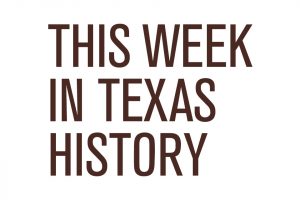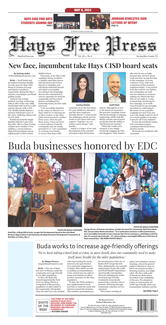The strangers that arrived at a West Texas ranch on Aug. 5, 1891 came with enough firepower to start a war, but instead of soldiers in some foreign army they were scientists on a mission to make it rain.
During the Civil War, Edward Powers observed that downpours often followed battles punctuated by artillery barrages. He argued in his book War and the Weather that an armed assault on the heavens might bring relief to drought-stricken regions.
For years the oddball theory attracted little attention, until an Illinois senator heard Powers speak on the subject. The influential politician quickly pulled a $9,000 appropriation out of his congressional hat, put a government chemist named Dyrenforth in charge of the project and talked a Chicago businessman into donating his Texas ranch as the test site.
Dyrenforth’s right-hand man explained the experiment to skeptical reporters at a San Antonio press conference in August 1891. John T. Ellis said the scientists hoped to demonstrate “by our explosions on the ground and one in mid-air we can cause a disturbance among various air currents which, throwing out moisture and heat, collect clouds.” But he stopped short of admitting that their goal was to make it rain.
Intrigued Texans read between the lines and hurried to Midland to watch the exciting event. Despite the inconclusive outcome, R.J. Kleberg, boss of the King Ranch, invited the rainmakers to come by for a visit at his expense.
Kleberg, however, had to wait his turn as the scientists honored previous commitments at El Paso and Corpus Christi. Although their performance at Texas’ westernmost town was an unqualified disappointment, the Gulf Coast gig renewed public interest in the venture.
From a hilltop on the outskirts of Corpus Christi, Ellis fired four 21-pound bombs into a thick overcast which had produced several showers earlier in the day. In a matter of minutes, a hard rain drenched participants and spectators alike as everyone politely ignored the part probably played by Mother Nature.
On Sept. 28, 1891, the rainmen kept their appointment with Kleberg at San Diego, the Duval County seat. Erecting a base camp named for their guru Powers, they anxiously waited for the necessary bone-dry forecast which the weather bureau finally supplied on Oct. 15.
The preliminary bombardment began at one o’clock the next afternoon, and by sunset the following day hundreds of charges had been detonated at five-minute intervals. But the government gunmen were merely warming up for the really big bang.
On hand was an arsenal that would have been the envy of any Mexican revolutionary. Dozens of dynamite batteries for the ground-level explosions were arranged in a giant semi-circle that measured three-quarters of a mile at the widest point. Alongside these charges were five mortars and a 12-pound cannon courtesy of the King Ranch. And ready for release into the crystal clear sky were six enormous balloons filled with an oxygen-helium mixture and wired with explosives.
At precisely 9:45 p.m. on Oct. 17, the first balloon soared into the darkness. At the moment it erupted, the mortars and cannon fired in unison.
The earth-shaking blast was without a doubt the loudest noise ever heard in the Lone Star State prior to the Texas City disaster in 1947. Kleberg was nearly knocked out of his bed 27 miles away. According to a local judge, the tremendous force of the concussion violently shook a sturdy bridge three miles from ground zero.
Clouds gradually gathered as the mortars lobbed their missiles to an altitude of 500 feet at the rate of one every six seconds for two ear-splitting hours. Then came the rest of the balloons 45 minutes apart.
Seconds after the final balloon, the first drops fell on Camp Powers. The light shower turned into a genuine gullywasher that covered the cracked earth with almost an inch of rain.
The modest trickle recorded at the King Ranch headquarters did not dampen the spirits of the ecstatic Kleberg, who reported that a neighbor was blessed by the best precipitation in three years. Many grateful inhabitants of San Diego also applauded the miracle workers for their magical feat.
A newspaperman did manage to ferret out one dissatisfied customer. Not a single raindrop fell on the ranch of N.G. Collins, a cattleman who had helped pay the scientists’ way to San Diego. He was understandably unimpressed by the expensive experiment and did not hesitate to express his disappointment for publication.
Seeming to take the criticism personally, John T. Ellis vigorously objected to the cowman’s comments. The chief rainmaker said through clenched teeth, “Collins would not have been satisfied if it had rained gold dollars on somebody else’s land.”
Bartee welcomes your comments and questions at barteehaile@gmail.com or P.O. Box 152, Friendswood, TX 77549 and invites you to visit his web site at barteehaile.com.






